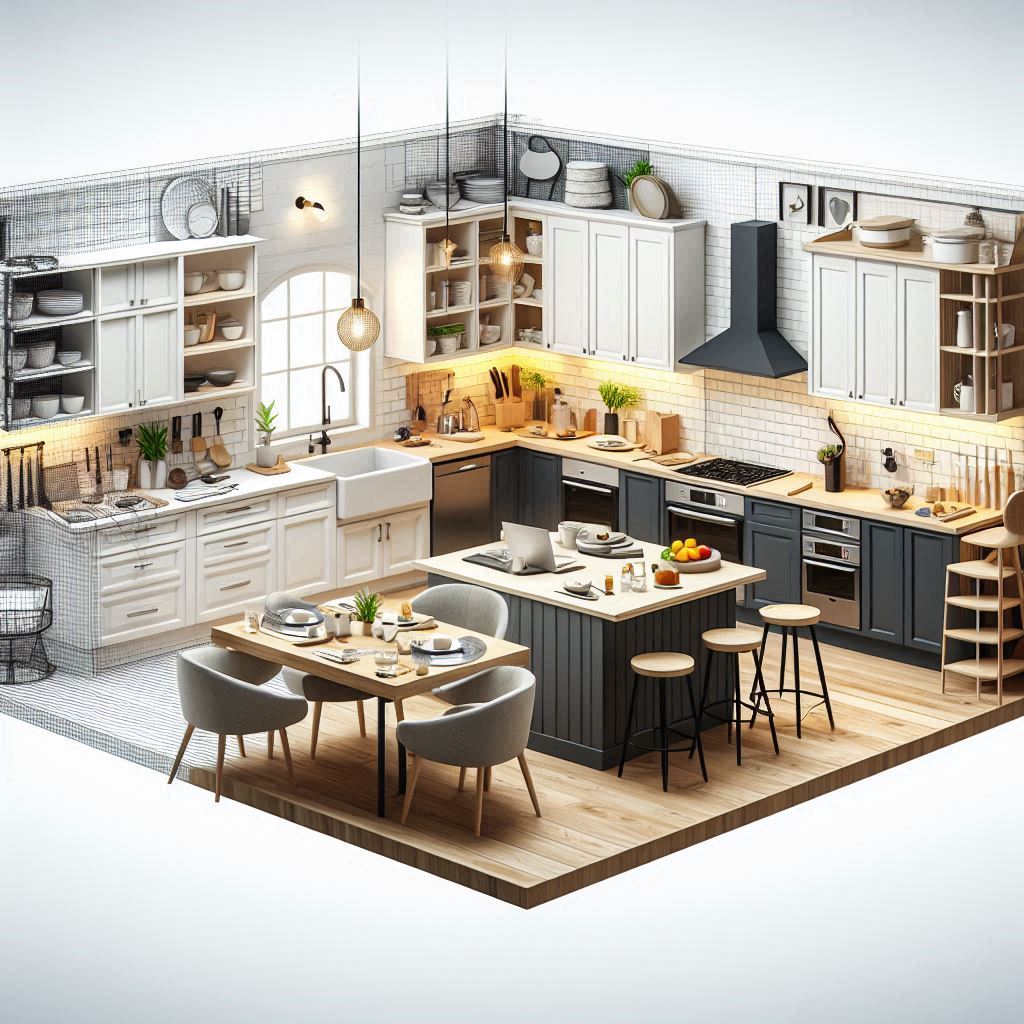A kitchen remodel is one of the most rewarding home improvement projects, offering the potential to enhance both functionality and style. Whether you’re aiming for a complete overhaul or just a few updates, a well-planned kitchen remodel can transform the heart of your home. This ultimate guide will walk you through the essential steps, from planning to execution.
1. Assess Your Needs and Set a Budget
Before you begin, take a close look at your current kitchen. What do you love? What needs to change? Consider your cooking habits, storage needs, and the overall layout. Once you have a clear vision, set a realistic budget. This will guide your decisions and help you prioritize where to spend and where to save.
2. Plan Your Layout
The layout is the foundation of a functional kitchen. Consider the classic work triangle, which connects the stove, sink, and refrigerator. Whether you prefer an open concept, a galley kitchen, or a U-shaped design, ensure that the layout supports your cooking flow and maximizes space.
3. Choose Your Style and Materials
Decide on the overall style of your kitchen. Are you drawn to modern, sleek lines, or do you prefer a more traditional, cozy feel? Choose materials that match your style and budget. This includes countertops, cabinets, flooring, and backsplashes. Popular choices include quartz countertops, hardwood or tile flooring, and shaker-style cabinets.
4. Focus on Storage Solutions
A well-organized kitchen is essential for efficiency. Consider incorporating features like pull-out pantry shelves, deep drawers, and overhead cabinets that maximize vertical space. An island with built-in storage can also be a game-changer.

5. Upgrade Appliances and Fixtures
Your appliances play a crucial role in the kitchen’s functionality. Invest in energy-efficient models that fit your cooking needs and complement your design. Don’t forget about fixtures like faucets, sinks, and lighting. LED lights under cabinets can add both style and practical task lighting.
6. Hire Professionals or Go DIY
Depending on the scope of your remodel and your DIY skills, you may need to hire professionals for tasks like plumbing, electrical work, and cabinetry. For more cosmetic changes like painting or installing backsplashes, you might tackle them yourself. Make sure to get multiple quotes if hiring contractors and check their references.
7. Execute the Remodel
Once everything is planned and ordered, it’s time to start the remodel. Begin with any structural changes, followed by installing cabinets, countertops, and appliances. Flooring and backsplashes typically come last. Stay flexible as unexpected challenges can arise, but keep the end goal in sight.
8. Add the Finishing Touches
The final touches bring your kitchen to life. Add decorative elements like cabinet hardware, window treatments, and artwork that reflect your style. Consider functional accessories such as a stylish rug or a set of matching dish towels.
Conclusion
Remodeling your kitchen is a significant undertaking, but with careful planning and execution, it can be a smooth and satisfying process. By following these steps, you can create a kitchen that not only meets your functional needs but also enhances the beauty and value of your home.



